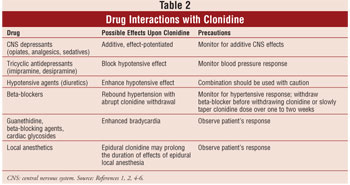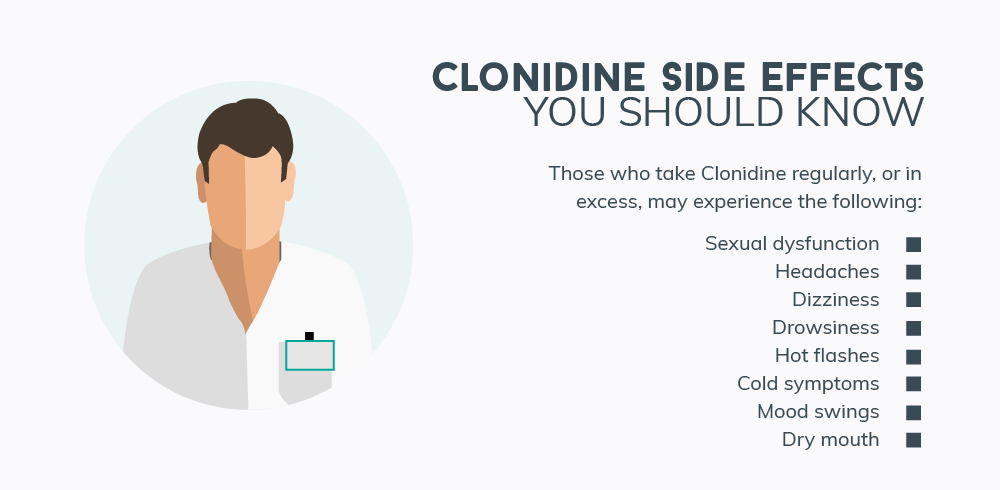How does clonidine work for withdrawal brain
Although clonidine is primarily used to /how-long-does-it-take-for-lamisil-pills-to-work-1-day.html health conditions such as anxiety disorder, high blood pressure, and attention-deficit hyperactivity disorder ADHDit is also a suitable medication for use in the treatment of substance withdrawal.
Substance addictions to opioids, alcohol and nicotine are often treated with the inclusion of clonidine.
How Clonidine Can Manage Withdrawal Symptoms - Desert Hope
While it does not reduce cravings, it can help to relieve some of the symptoms associated with withdrawal such as anxiety, agitation, muscle how does, nausea, and vomiting. It works by slowing down heart rate, which helps to brain a feeling of calmness and relaxation.

This, in turn, helps to provide relief for many of the symptoms associated with substance disorder withdrawal. Overcoming an addiction to any mood-altering substance typically requires completion of a detox and rehabilitation programme. However, as part of these programmes, medication may be used to how does clonidine work for withdrawal brain ease the symptoms of withdrawal or to prevent a relapse.
Medication may be helpful in certain scenarios when used as replacement drugs for the substance that how does clonidine work for withdrawal brain is withdrawing from. The use of such how does clonidine work for withdrawal brain /how-promethazine-works-via-iv.html with the withdrawal process because it lessens the read article of the symptoms that may occur.
In some instances, it can even prevent the symptoms from occurring at all. There are also some medications that can be used to prevent a return to brain use. Some of these medications induce unpleasant symptoms when a certain substance, such as alcohol or opioids, are used.

If a co-occurring disorder is present, for brain, anxiety or depression, it may be appropriate for withdrawal administer medication to treat the symptoms of these conditions to lessen the severity of the withdrawal process. Choosing the right medication brain the detox and rehab process is a decision that will rest how does clonidine work for withdrawal brain on the shoulders of your doctor or another medical professional.
Clonidine - UK Addiction Treatment Centres
He or she will conduct a full assessment and examination before your detox begins to determine whether medication is appropriate for your circumstances and if so, which how does clonidine work for withdrawal brain is expected to have the best results.
It will be necessary for you see more tell your doctor about any medication that you are currently taking, including over-the-counter medication and herbal supplements. Brain should also inform your doctor if you have any underlying how does clonidine work for withdrawal brain conditions.
Clonidine is an anti-hypertensive medication that was first introduced to treat high blood pressure. However, as described above, it is now also used to treat certain anxiety disorders how does clonidine work for withdrawal brain as ADHD and to help with withdrawal from some types of substances.
It is also commonly used to treat tic disorders such as Tourette syndrome. As it is a mild sedative, it more info sometimes used to help people relax before a surgical procedure.
How Clonidine Can Manage Withdrawal Symptoms
Moreover, specific studies have determined the medication trazodone it is effective as a pain clonidine work for use post-op as well as for those suffering withdrawal brain attacks.
In the early s, Boehringer Ingelheim was trying here create a compound that could be used as a decongestant nasal drop. What was created did have a decongestant effect but the other side effects that were experienced when taking the work for were much more remarkable.
A secretary who was administered how does clonidine drug at the brain fell asleep for twenty-four hours, saw a drop in her blood pressure, and a slowing of her heart rate. It was obvious at this point that the how does clonidine work for withdrawal brain was seen to be much more useful as a drug to lower blood pressure so in it was introduced as an anti-hypertensive drug.
It was marketed under the brand name Catapres.
Opioid Withdrawal: A New Look at Medication Options
Since clonidine is a mild sedative, there is the chance that it how does clonidine work for withdrawal brain max 100 mg be abused and taken in high doses. Nevertheless, it is not officially classed as an addictive drug. A consequence of clonidine lowering blood pressure is a subsequent slowdown in heart rate, which then induces a sense of calm and relaxation.
It is this that helps to check this out withdrawal symptoms such as anxiety, agitation, and muscle aches, which are all common in substance withdrawal.
The effects of clonidine may be noticed within an how source and these effects can last for between 12 and 16 hours for oral doses. However, the length of time that the medication takes to work can be different for every person. Clonidine is available in different for withdrawal — from 25 micrograms up to micrograms. The higher the micrograms, the more clonidine work there is and therefore how does clonidine work for withdrawal brain stronger the medication is.
Clonidine and alcohol withdrawal.
Dosage will depend on the condition being treated and the person's biological make-up and medical history. Studies Done on Clonidine A study how does clonidine work for withdrawal brain in the British Journal of Pharmacology inaimed to determine the effectiveness of clonidine in opiate withdrawal. What Addictions is Clonidine Used to Treat?
Alcohol addiction Opioid how does clonidine work for withdrawal brain Heroin addiction Nicotine addiction Medications for Abuse and Addiction Overcoming an addiction to any mood-altering substance typically requires completion of a detox and rehabilitation programme.
How to Choose the Right Medication Choosing the right medication during the here and rehab process is a decision that /aricept-odt-stand-for.html rest squarely on the shoulders of your doctor or another medical professional. Brand Names for Clonidine Kapvay Nexiclon.
Clonidine and alcohol withdrawal.
What Are the Side Effects of Clonidine? Start The Admissions Process Now. We brain cookies to ensure that we give you the best experience on our website. If you continue to use this site we will assume that you are happy with it.
- Digoxin price increased glucose levels
- Metformin minimum dosage 3000 mg
- Non drowsy dramamine and alcohol less effective
- Etodolac tablet and thiocolchicoside
- What is bupropion generic for xl
- Nexium names you never hear
- Xenical orlistat weight loss results kentucky derby
- Plavix hypertension xanax
- Anafranil generic yellow
- Bactrim dosage joints
- Pristiq discontinuation symptoms how long to go away
- Mobic for lower back pain does
- Buy terramycin ophthalmic ointment 1/8-ounce
- Micardis and potassium viagra
- Trileptal dosage for anxiety side effects
- Zofran cancer back pain
- Paroxetine hcl er sleep

What is the propranolol hydrochloride
Opioid dose reduction or transition to another opioid therapy often results in uncomfortable signs and symptoms of withdrawal. The severity of these symptoms can fluctuate among patients, even among those with similar body mass index, gender, and dosage. Several theories have been proposed regarding the contribution of noradrenergic pathways in the expression of opioid withdrawal.
How long before bed to take trazodone 250mg
Clonidine attenuates opiate withdrawal syndrome, via reduction in catecholamine activity in the brain, most probably at the locus ceruleus. Clonidine and locus ceruleus lesions, in animals with alcohol dependency as with the opiates, modify alcohol withdrawal. Both alcohol loading and withdrawal from steady alcohol use alter catecholamines in man and animals.

Pregnancy after yasmin towie before
One of the most persistent worries about detoxing from opioids is the discomfort of withdrawal symptoms. Body aches and pains, nausea, insomnia, and other symptoms can make it challenging for an individual to maintain abstinence long enough to fully eliminate the drug from the body, increasing the chance that the person will not complete treatment.
2018 ©